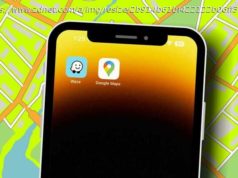LG has announced that it will partner with Sprint’s networking experts to design a 5G smartphone, with plans to launch the device in the first half of 2019.
LG has announced that it is working with Sprint on delivering the first 5G smartphone in the United States in the first half of 2019, following the launch of the carrier’s 5G network at the beginning of next year.
The companies said they would have more information on device specifications and exact timing of the launch at a later date.
LG Electronics North America CEO William Cho said the tech company’s nearly 20-year partnership with Sprint would expand, with Sprint’s 5G experts to partner with LG in the design of the phone.
«LG has done tremendous work developing technical designs that enable us to be among the first movers in mobile 5G,» Sprint CTO Dr John Saw added.
«Today’s announcement brings us one step closer to putting a beautifully designed advanced 5G smartphone in our customers’ hands.»
Saw told ZDNet during Mobile World Congress (MWC) 2018 in February that his carrier has the best 5G spectrum, with Sprint choosing its initial six 5G markets of Los Angeles, Washington DC, Atlanta, Chicago, Dallas, and Houston due to their high traffic and its spectrum holdings.
Sprint in May added New York City, Phoenix, and Kansas City to its 5G rollout roadmap.
In a report last month, Ookla argued that the T-Mobile merger with Sprint «could result in an unmatched network in the face of 5G».
«Our plan continues to be to bring 5G to 30 cities in 2018 starting with New York, LA, Dallas, Las Vegas with nationwide coverage coming in 2020. This network will utilize 600 megahertz and will harness 4G and 5G bandwidth simultaneously for dual connectivity, and we’ll be ready for the first 5G smartphones in 2019,» T-Mobile CEO John Legere said earlier this month.
«While we still have a number of steps remaining in the regulatory approval process, we are optimistic and confident that regulators will recognize the significant pro-competitive benefits of this combination and grant regulatory approval.»
T-Mobile CTO Neville Ray told ZDNet during MWC that the carrier’s 5G deployment across 30 cities this year — Los Angeles, New York, Las Vegas, and Dallas are to have the service by 2019 — is «moving well», with the 600MHz LTE rollout beginning last year and much of the hardware being 5G NR capable.
In making T-Mobile’s 5G announcement, Ray had emphasised LTE-Advanced upgrades would form the basis for the network, with T-Mobile planning to build its 5G offering using both 600MHz and mmWave spectrum, as well as deploying 25,000 small cells for LAA-LTE.
Read also: Sprint CTO at MWC: We have the best 5G spectrum
Sprint earlier this month reported adding 123,000 post-paid customers during the quarter to June 30, for a total of 32 million post-paid customers, as well as adding 3,000 prepaid customers for a total of 9 million.
As of June 30, Sprint had a total wireless customer base of almost 54.6 million .
According to Sprint, it spent the quarter to June adding thousands of outdoor small cells, with 15,000 now installed; distributing more than 65,000 of its Magic Boxes for over 260,000 across the nation; and deploying 2.5GHz spectrum on almost two thirds of its macro sites.
Its deployment of Massive Multiple-Input Multiple-Output (Massive MIMO) radios ahead of the launch of 5G is also under way, with Sprint saying it «continues to expect to launch the first mobile 5G network in the US in the first half of 2019».
Sprint additionally said it plans to utilise artificial intelligence across its customer service offerings.
A blog post by Saw said the carrier also deployed around 7,000 stand-mount 2.5GHz small cells on its cable infrastructure during Q1.
«Since the quarter ended, our efforts have continued to accelerate, and today we have more than 10,000 strand mount small cells deployed. As a result, we’re seeing significantly improved data performance in those places where we’re able to reach a high enough density of strand mounts,» Saw said.
«Massive MIMO is our award-winning strategy for 5G. This game-changing technology is capable of delivering up to 10 times the capacity of current LTE systems, significantly increasing data speeds for more customers in high-traffic locations. And because Sprint has so much 2.5GHz spectrum, we can use Massive MIMO to deliver 4G LTE and 5G on the same radio simultaneously.»
According to Ookla, Sprint was ranked fastest in five cities across the United States — Austin, Texas; Denver, Colorado; Lincoln, Nebraska; Norfolk, Virginia; and Reno, Nevada — as well as tying with T-Mobile for Corpus Christi, Texas, and with AT&T for Louisville, Kentucky.
Sprint has been partnering with Samsung for gigabit-speed LTE, in September last year trialling Massive MIMO.
Conducting a test during MWC with Nokia, Sprint demonstrated the capacity to reach 1Gbps speeds — or around 270Mbps per end user once split between four devices — using three-carrier aggregation with Massive MIMO.
Once dual-connectivity mode running simultaneous 5G and LTE services is enabled, however, the network will see speeds upwards of 2.5Gbps, Saw said.
In December, T-Mobile announced using LTE Licensed Assisted Access (LTE-LAA) technology to achieve speeds of 1.1Gbps on its LTE network with Ericsson in combination with its earlier deployments of 4×4 MIMO and 256 Quadrature Amplitude Moderation (QAM) technology.
Sprint hits 55 million customers ahead of T-Mobile merger
Sprint said it still expects to be the first carrier to launch 5G in 2019, spending the most recent quarter continuing to deploy thousands of small cells, Magic Boxes, and Massive MIMO radios.
Why a pair-up between T-Mobile and Sprint could improve your IoT and mobile worker plans (TechRepublic)
The deal, which would cost billions of dollars, still must pass regulatory scrutiny.
The T-Mobile and Sprint merger: The numbers and assumptions you need to know
T-Mobile and Sprint are merging to create a big play for 5G by combining networks and wireless spectrum.






